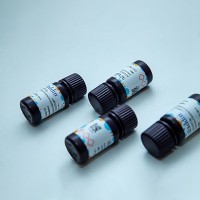Plasmid-Based Reporter Genes: Assays for Green Fluorescent Protein
互联网
互联网
相关产品推荐

NRSF-GFP报告基因质粒(NRSF (Neuron-Restrictive Silencer Factor) GFP Reporter Plasmid)
¥3365

柠檬酸盐浓缩液,68-04-2,BioReagent, 4 % (w/v), suitable for coagulation assays,阿拉丁
¥237.90

链霉亲合素,9013-20-1,from Streptomyces avidinii,≥12 U/mg protein,阿拉丁
¥247.90

Histone H3 Peptide, biotin conjugate, residues 21-44,This gene contains introns & its mRNA is polyadenylated, unlike most histone genes. The protein encoded is a replication-independent member of the histone H3 family.,阿拉丁
¥3283.90

羧甲基淀粉钠,9063-38-1,欧洲药典, NF, JP, EtOH-based,阿拉丁
¥239.90
相关问答
推荐阅读
Plasmid-Based Reporter Genes: Assays for -Galactosidase and Alkaline Phosphatase Activities
Luciferase and Green Fluorescent Protein Reporter Genes as Tools to Determine Protein Abundance and Intracellular Dynamics
A Promoter Probe Plasmid Based on Green Fluorescent Protein: A Strategy for Studying Meningococcal Gene Expression

